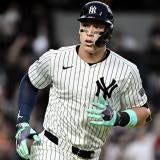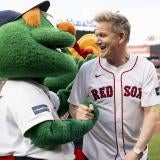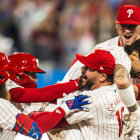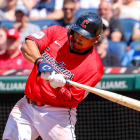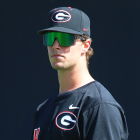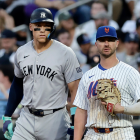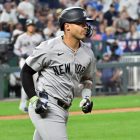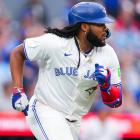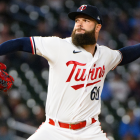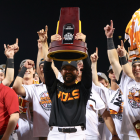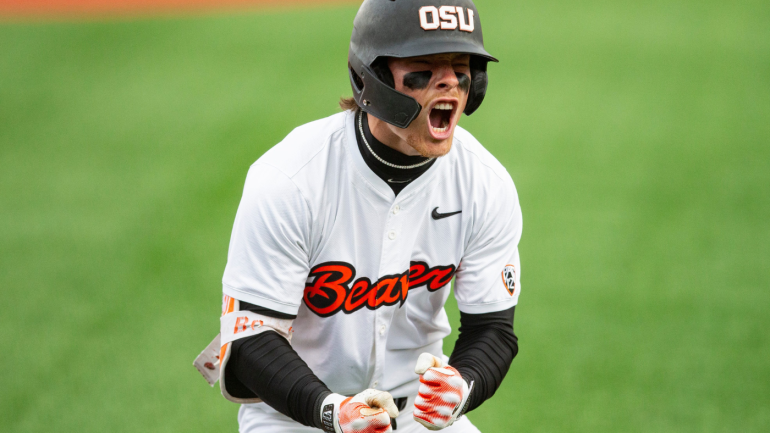
Major League Baseball's amateur draft is now less than a month away. Come July 14, the Cleveland Guardians will make the No. 1 overall selection for the first time in franchise history. The Guardians aren't a total stranger to picking near the top of the draft: they've chosen second on five occasions, most recently in 1992, when they plucked right-hander Paul Shuey from North Carolina. Who will displace Shuey (and four others) as the highest selected player in franchise history?
At this point in the process, no one can say for sure. That includes the Guardians, who have ostensibly dwindled their list of candidates to a handful of names. Ask any honest scouting director and they'll tell you that these decisions are seldom made in advance -- particularly in the Bonus Pool Era, and especially when there are several comparable and defensible players to choose from. The Guardians themselves probably won't have an answer until the final hours.
The draft is no longer an exercise in picking the best player. Nowadays, it's a math problem. Teams want to maximize the amount of talent they receive for their dollars. Sometimes, that means taking the best player, price be damned. More and more, though, teams spread out the money with the hopes that they can snag a player who slips for financial reasons. Look no further than the Houston Astros, the Baltimore Orioles, and the Pittsburgh Pirates for recent examples of this strategy, which we've taken to referring to as the portfolio approach. (Rolls right off the tongue, doesn't it?)
Guardians scouting director Ethan Purser, in his first year at the helm, will have the draft's largest bonus pool, just over $18 million. The No. 1 pick has an allotted bonus amount of $10.57 million, but no player will require that much: Paul Skenes and Dylan Crews, the top two picks last summer, became the first draftees to clear the $9 million threshold. It's also safe to assume the Guardians will leverage the top prospects in the class to gain even more savings they can deploy later on in the draft; mind you, Cleveland possesses two other top-50 picks, in Nos. 36 and 48, meaning that a well-executed approach could see them clean up in the early stages of the draft.
With all that established, we here at CBS Sports wanted to highlight five players who are likely to have their names bandied about in connection to the No. 1 pick between now and July 14. Below, you'll find those players, along with information about their games and the reasons they may (or may not) be the top pick when the Guardians make their decision.
Do note that the players are presented in order of their perceived chances of going No. 1.
1. 2B Travis Bazzana, Oregon State
We noted in our preseason draft rankings that other front offices believed the Guardians were enamored with Bazzana, an optimized lefty hitter with great feel for the barrel and oft-praised makeup. He subsequently posted a monster season, batting .418/.581/.939 with 26 home runs, 15 stolen bases, and 39 more walks than strikeouts. There are valid reasons why Bazzana might not go No. 1 this summer -- namely, the Guardians preferring a different player's price point -- but we have to imagine their fondness for him and his game has only grown stronger. Other teams still think he's going to be the pick, for whatever that's worth.
2. 3B/OF Charlie Condon, Georgia
Condon is one of the few players in the nation who can claim that they outperformed Bazzana. He entered the spring viewed as someone who could hit their way into the top-five; he did just that, batting .443/.558/1.043 with 35 home runs and 11 more walks than strikeouts. He does have a more aggressive approach than Bazzana and some of the other top collegiate bats in this class, but there's no denying his innate strength or his ability to tag fastballs. Condon played a lot of third base and center field this season, and his stock might be higher in the Guardians' eyes if they believe he can hold down either position, at least at the onset of his big-league career.
3. MIF JJ Wetherholt, West Virginia
Wetherholt, our No. 1 prospect entering the spring, suffered a hamstring injury during Opening Weekend that cost him about half the season. As a rival scouting director pointed out, that injury may have improved his chances of going No. 1 if it caused his price to drop to Cleveland's liking. Wetherholt performed well when he was able, batting .356/.500/.664 with eight home runs and five steals in 31 games. His polished offensive skill set is largely comparable to Bazzana's, and he too is expected to slot in at second base despite spending the spring playing shortstop.
4. 1B/LHP Jac Caglianone, Florida
Caglianone is both the class's most intriguing two-way talent and a polarizing prospect to forecast heading forward. As a batter, he has massive strength and high-quality bat-to-ball skills that have enabled him to overcome a swing-happy approach; as a pitcher, his ability to touch into the upper-90s has been overshadowed by relief-caliber command. It seems reasonable to think that Caglianone will be asked to prioritize hitting at the next level, putting more pressure on him to refine his approach before more advanced pitchers have a chance to exploit it. The Guardians have largely gravitated toward first-round hitters with good plate discipline in recent years. Caglianone would be a departure.
5. RHP Chase Burns, Wake Forest
There's a school of thought in progressive front offices, those similar to Cleveland's, that you shouldn't take a pitcher in the first round because of their attrition rates and because it's easier to develop pitching at the professional level; hence the Orioles and Rays combining to take one pitcher with their last 15 first- or supplemental-round choices. (Mind you, Purser, the aforementioned scouting director, worked for the Rays' scouting department before joining the Guardians.) The Guardians very much haven't subscribed to that theory, selecting arms with six of their last 10 first- or supplemental-round picks. As such, we cannot rule out the possibility that they consider Burns, possessor of a high-grade fastball-slider combination and a 2.46 ERA in 95 innings, or perhaps even Arkansas lefty Hagen Smith. Still, if we had to guess -- and, as we've established, that's all we or anyone can do right now -- we would say it's unlikely they take an arm given the bats available.



